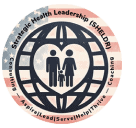Are you chasing shiny AI tools—or building the kind of health system that actually gets better because of them?
Executive Summary: This three-part series equips Strategic Health Leaders (SHELDRs) with the historical foresight needed to lead AI adoption wisely in the Make All Americans Healthier as a National Strategic Imperative (MAHANSI) era. Part Two unpacks the opportunities AI creates today and ties them to real-world precedents, offering strategic actions leaders can take. SHELDRs who study AI’s past are better prepared to spot red flags, scale ethical innovations, and ask the right questions before committing to the next “solution.” This isn’t about slowing down—it’s about leading smart, safe, and strong.
Table of Contents
Why AI Matters for Strategic Health Leaders – Opportunities
Part One traced AI’s evolution from the 1956 Dartmouth Conference to ChatGPT, revealing how each wave of innovation shaped healthcare and why historical literacy is essential for strategic health leadership today.
Artificial Intelligence (AI) is no longer a distant promise—it is a present-day force reshaping how we diagnose illness, deliver care, and lead health systems. For strategic health leaders, AI provides a powerful set of tools to enhance outcomes, diminish inefficiencies, and promote equity. However, it also requires vigilance, ethical considerations, and adaptive leadership. This table outlines core opportunities AI presents in healthcare, anchored in historical precedent, and paired with strategic actions leaders must take to translate potential into performance while maintaining trust, quality, and justice in this transformative era.
Table 2: AI in Healthcare: Opportunities, Precedents, and Strategic Approaches
| Opportunity | Precedent and Example | Strategic Implementation Approach |
| Improving Outcomes: AI enhances diagnostic precision, supports personalized care plans, and fosters stronger patient engagement. | MYCIN improved infectious disease diagnosis using rule-based logic, offering early proof that AI could match or exceed physician performance. | Health leaders must prioritize AI integration in care workflows, align with evidence-based protocols, and build patient trust in AI-enhanced decisions. |
| Boosting Operational Efficiency: From automating administrative tasks to improving scheduling and resource use, AI helps unclog bottlenecks and reduce clinician burnout. | Kaiser Permanente used AI to predict no-shows, optimize scheduling and resource allocation, and improve efficiency and patient access. | Adopt AI for backend and front-end operations. Engage staff in redesigning workflows to amplify efficiency and reduce clinician overload. |
| Reducing Costs: AI enables more innovative resource use and highlights areas ripe for cost savings—without sacrificing quality. | Geisinger Health used predictive analytics to reduce hospital readmissions, saving millions while maintaining quality standards. | Use AI for population health, predictive cost modeling, and fraud detection. Invest savings into upstream prevention and digital infrastructure upgrades. |
| Driving Innovation: Leaders who stay informed and adaptable can guide their organizations through rapid change and secure a competitive edge. | Cleveland Clinic’s early digital transformation positioned it as a global leader in AI-powered cardiology and remote diagnostics. | Foster an innovation culture, fund pilot programs, and create rapid learning labs to scale proven AI interventions across systems. |
| Addressing Health Disparities: AI’s ability to detect patterns can help uncover and address disparities in care delivery, bringing us closer to health equity. | AI helped New York’s Mount Sinai detect disparities in COVID-19 outcomes across neighborhoods, guiding targeted outreach and mobile clinics. | Deploy equity dashboards, train AI on inclusive datasets, and engage communities to co-design solutions that address local social determinants of health. |
| Navigating Ethics: Data privacy, algorithmic bias, and equitable access are critical issues. Leaders must ensure AI deployment aligns with organizational values and public trust. | The backlash to facial recognition in healthcare highlighted ethical missteps and public concern over surveillance and privacy. | Establish AI ethics boards, mandate transparency and oversight, include patients in governance, and build guardrails around privacy, access, and explainability. |
AI presents an immense opportunity—but realizing its value requires intentional, strategic leadership. History reminds us that innovation without foresight often fails or harms. Today’s health leaders must guide AI adoption with wisdom, transparency, and commitment to community-centered values. By embracing innovation while addressing risk and equity, leaders can turn these opportunities into enduring systems change that not only treats illness but builds healthier futures for all. The next generation of healthcare transformation is here—will you lead it or follow?
SHELDRs who ignore AI’s past risk being blindsided by its future. Those who understand it can ask the right questions to shape it—and use it to deliver smarter, safer, and more strategic health systems.
With opportunity comes risk. Before charging ahead, SHELDRs must confront hard lessons from real-world AI failures. In Part Three, we examine eight costly missteps and how to avoid repeating them.
Learn More Here
Adapt or Die: 6 Ways AI Leadership Prompts Can Help You Develop, Enhance, and Sustain Success
Discussion Questions
- How can historical AI precedents inform today’s deployment of generative AI tools in care delivery?
- Which current opportunity—outcomes, efficiency, cost savings, innovation, equity, or ethics—presents the most urgent use case for your organization?
- What risks emerge if AI is implemented solely for operational gain without strategic alignment to mission or community values?
- How can leaders create feedback loops that evaluate whether AI tools are delivering the intended health outcomes and equity gains?
- What structural barriers limit SHELDRs from implementing the strategic approaches outlined in the opportunity-precedent table?
#SmartHealthAI
#AIWithPurpose
#StrategicHealthInnovation




